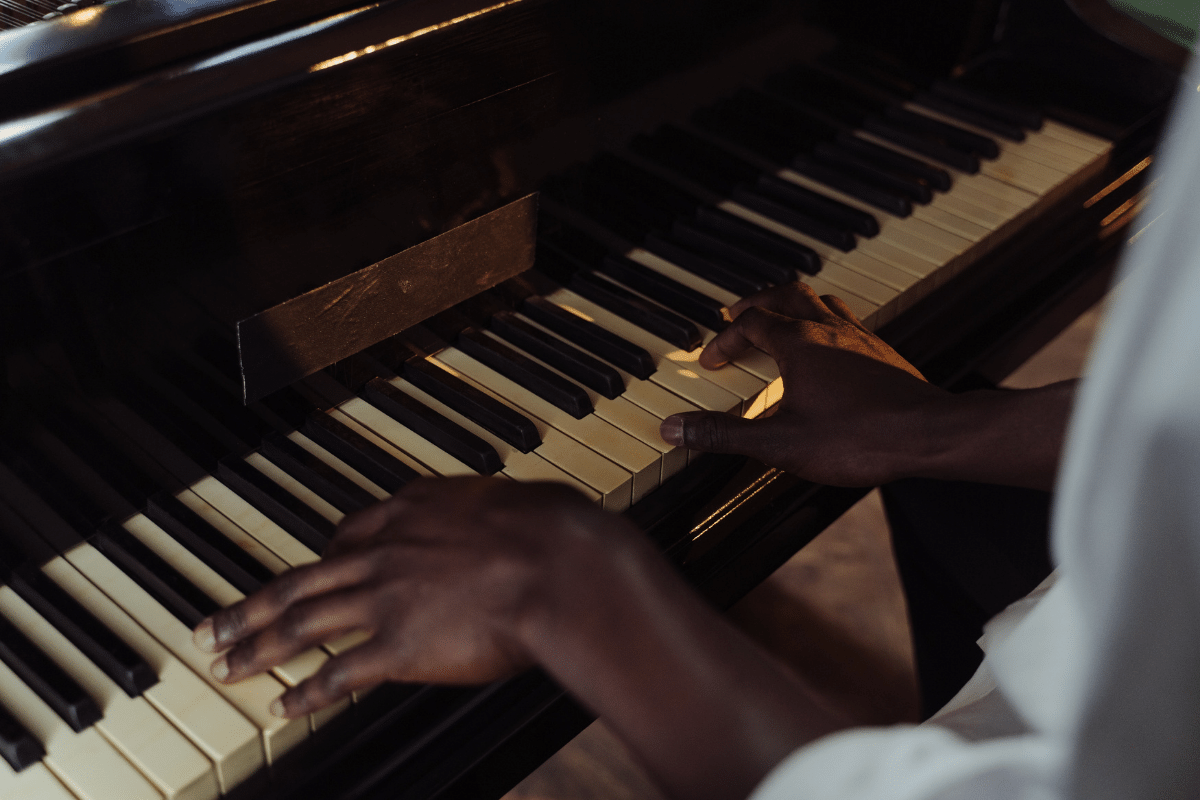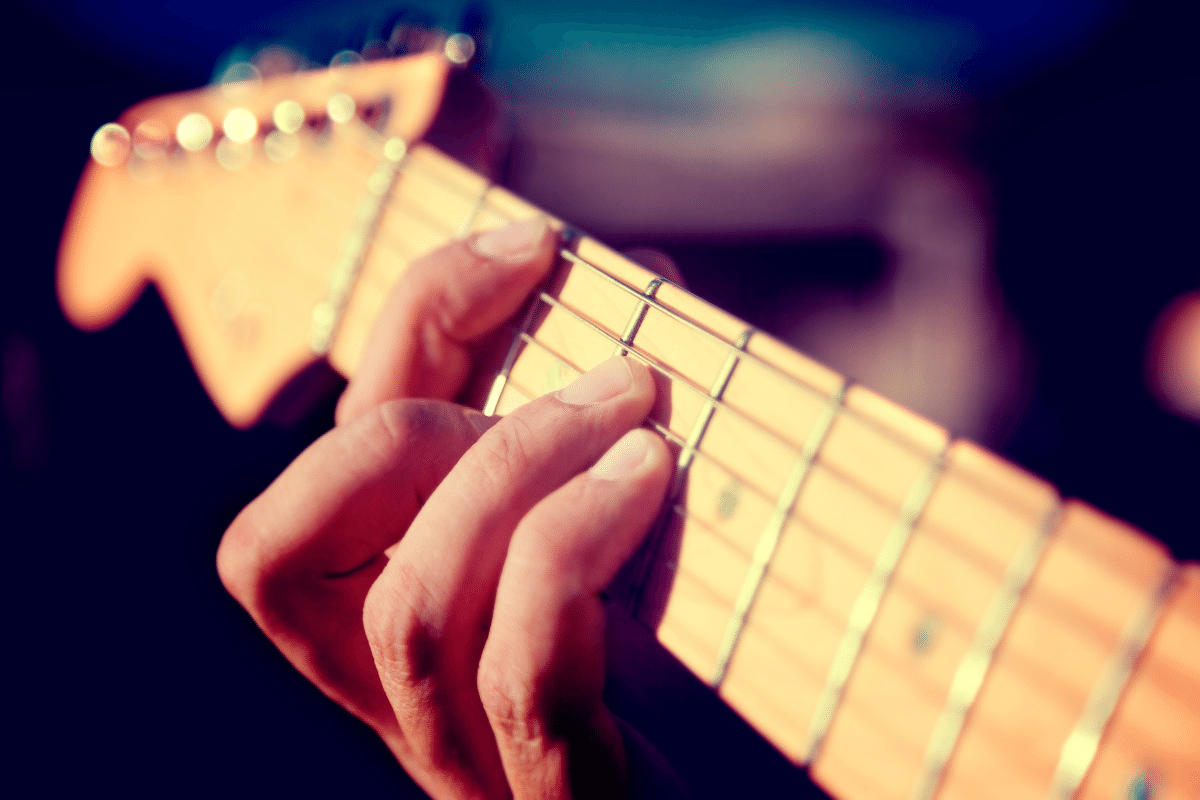How Do Instruments Make Sound? | Science of Music7 min read
Reading Time: 5 minutesInstruments make sound by vibrating. When an instrument vibrates, it creates sound waves that travel through the air. These sound waves cause the air molecules around them to vibrate, and when these air molecules vibrate, they create sound.
The sound that an instrument produces depends on how it is vibrated. For example, a guitar string is vibrated by plucking it, while a trumpet is vibrated by blowing into it. The shape and size of the instrument also affects the sound that it produces. For example, a trumpet has a larger bell than a flute, which makes the sound waves produced by a trumpet bigger and louder than the sound waves produced by a flute.
The pitch of an instrument’s sound also depends on how it is vibrated. For example, a guitar string that is vibrated at a higher frequency will produce a higher pitched sound than a guitar string that is vibrated at a lower frequency.
Instruments also produce different sounds depending on the type of material they are made out of. For example, metal instruments like cymbals produce a brighter sound than wooden instruments like a violin.
Finally, the way an instrument is played also affects the sound that it produces. For example, the sound of a guitar can be made to sound louder or softer by changing the pressure of your hand on the string.
Table of Contents
How do instruments produce sound for kids?
When most people think of music, they think of instruments. Instruments are what create the music that we hear. There are all sorts of different instruments, from guitars to drums to trumpets. But how do these instruments create sound?
In order to produce sound, an instrument needs to create vibrations. When you pluck a guitar string, for example, you create vibrations in the string. These vibrations then travel through the air and are heard as sound.
In order to create vibrations, an instrument needs something to vibrate. This can be a string, a column of air, or a metal plate. The vibrations are created by hitting or plucking the object, and then the sound is heard.
The sound that an instrument produces can be changed by the size and shape of the object that is vibrating. For example, a guitar string that is thinner will produce a higher pitch than a guitar string that is thicker.
Instruments also produce different sounds depending on the material that they are made from. A metal trumpet will produce a different sound than a wooden trumpet, for example.
So, how do instruments produce sound for kids? By creating vibrations that travel through the air and are heard as sound. The size, shape, and material of the instrument can all affect the sound that is produced.

How do string instruments make sound?
String instruments make sound by vibrating strings. When a string is plucked or bowed, it starts to vibrate. This vibration is transmitted to the bridge, which in turn vibrates the soundboard. The soundboard amplifies the sound and projects it out of the instrument.
How do you make sound?
Making sound is a vital part of communication. It’s how we express ourselves and interact with the world around us. But how does sound work?
- The sound we hear is made up of tiny vibrations that travel through the air. When something makes a sound, it causes these vibrations to form in a particular pattern. This pattern travels through the air until it hits our ears, and our brains decipher it as sound.
- The way these vibrations are created can vary depending on the type of sound. For example, when you clap your hands, your palms come together and push the air apart. This creates a sudden burst of air that vibrates quickly, creating the sound of clapping.
- Other sounds are created differently. A singer’s voice, for example, is created by the vibration of the singer’s vocal cords. These cords are made of muscle and tissue, and when they vibrate, they create sound waves. These waves travel through the air and are heard by our ears.
- So how do we control the sound we make? It all comes down to the vibrations in our vocal cords. By changing the shape of our cords, we can change the sound of our voice. For example, when we sing, we tighten and loosen our cords to create different notes.
- Making sound is a fascinating process, and it’s a big part of how we communicate with the world around us. Next time you hear someone speaking or singing, take a moment to appreciate the complex process that created that sound.
How does blowing an instrument make a sound?
When you blow into an instrument, the air pressure inside the instrument increases. This increase in pressure forces the air out of the instrument, creating a sound. The pitch of the sound is determined by the size and shape of the instrument, as well as the force and speed of the air flow.
How does an instrument work?
An instrument is a tool used to produce sound. There are many different types of instruments, including woodwinds, brass, strings, and percussion. Each type of instrument has its own unique way of producing sound.
Woodwinds are a type of brass instrument. They are made of metal, but unlike brass instruments, they are not played with a mouthpiece. Instead, air is blown through the instrument, causing it to vibrate. This vibration creates a tone that can be heard when the instrument is played.
Brass instruments are made of metal and are played with a mouthpiece. When air is blown into the instrument, it causes the brass to vibrate. This vibration creates a tone that can be heard when the instrument is played.
String instruments are made of wood or metal and are played with a bow. When the bow is drawn across the strings, it sets them into vibration. This vibration creates a tone that can be heard when the instrument is played.
Percussion instruments are made of metal, wood, or plastic. They are played by hitting them with other objects. When an object is hit against the percussion instrument, it sets it into vibration. This vibration creates a tone that can be heard when the instrument is played.
How do musical instruments produce sound Class 8?
There are many different ways that musical instruments produce sound. Some instruments, like guitars, produce sound when a person plucks the strings. Other instruments, like trumpets, produce sound when a person blows into them. Still other instruments, like pianos, produce sound when a person hits the keys.
Regardless of how they produce sound, all musical instruments work in basically the same way. When a person plays a musical instrument, they create vibrations in the instrument. These vibrations cause the air inside the instrument to vibrate, and the vibrations of the air cause the sound waves to form. These sound waves travel through the air and eventually reach our ears, where we hear them as sound.
How do instruments work?
There are many different types of instruments, and each one works a little differently. But most instruments create sound by vibrating air molecules. When you blow into a trumpet, for example, the air inside the trumpet tube vibrates. This vibration causes the air molecules in the surrounding air to vibrate too, and we hear the sound.
Instruments can also create sound by vibrating metal or wood strings. When you pluck a string on a guitar, for example, the string vibrates and sets the air molecules around it into vibration.
Some instruments, like the piano, create sound by hitting metal or wood keys. When you press a key, a small metal rod called a hammer hits a string, causing it to vibrate.
Most instruments make sound by using a combination of these methods. trumpets, for example, use metal and wood strings to create sound. The player blows air into the trumpet to set the metal strings into vibration, and the vibration of the metal strings sets the wood strings into vibration too.




